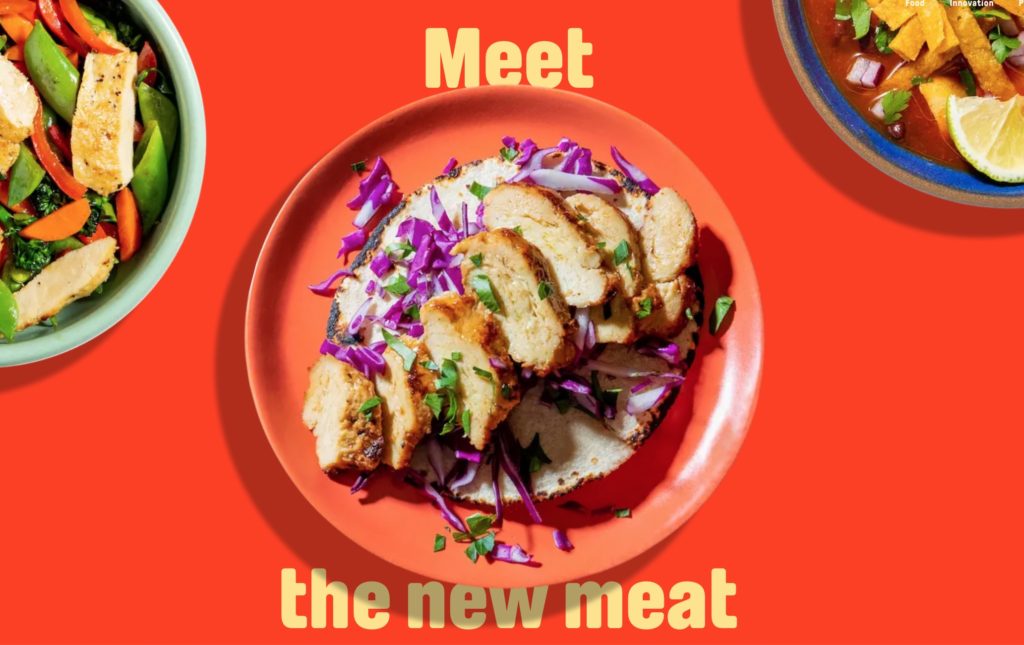Cover photo: UPSIDE Foods
Today’s Focus of Attention is reader-supported. We sometimes include products we think are useful for our readers. If you buy through links on this page, we may earn a small commission.

Imagine biting into a juicy piece of chicken that didn’t come from a farm but from a lab. Sounds like science fiction? Well, not quite.
The US Agriculture Department has given the green light to California-based GOOD Meat to sell their chicken produced from cultured cells, heralding a new era of sustainable meat production.
The approval came after the Food and Drug Administration (FDA) confirmed in March this year that cultivated chicken was safe for consumers.
Along with GOOD Meat, The Agriculture Department also approved lab-grown chicken from UPSIDE Foods, which had already received regulatory acceptance from the FDA in November 2022.
From now on, GOOD Meat and UPSIDE Foods can offer their products to restaurants and, fingers crossed, in a little while, supermarkets.
What is cultured chicken?

Cultured, cell-cultivated, or lab-grown chicken is an alternative to conventional meat that looks, cooks, smells, and tastes like any other poultry product.
It’s not made from plant proteins or other ingredients; cultured meat is meat.
Amy Chen, UPSIDE Food’s Chief Operating Officer, said that the common response they get regarding their meat is “Oh, it tastes like chicken.”
Aside from the environmental benefits, lab-grown meat could also offer a solution to food shortages, supply chain problems, animal welfare, and the efficient use of vast swathes of land that would otherwise serve to raise livestock.
Josh Tetrick, co-founder and chief executive of Eat Just, operator of GOOD Meat, said, “Instead of all of that land and water that’s used to feed all of these animals that are slaughtered, we can do it in a different way.”
How is lab-grown meat made?

This alternative to regular meat is produced in labs from animal cells and grown in factories.
Here’s a summary of the process:
- Technicians in a lab take cells from a donor animal or a fertilised egg.
- Following this, they place the cells in a medium to be nourished.
- Then, the personnel move the cell medium into tanks called cultivators, where the cells multiply and grow into muscle fibres.
- And around three weeks later, in the case of chicken, the tissue is removed from the cultivators, ready for consumption.
Let’s look at the whole picture.
The cells coming from only one bird, for example, allow for the cultivation of the same quantity of poultry that would normally come from hundreds of thousands of traditionally farmed birds.
In January this year, we wrote an article about how UPSIDE Foods produces their meat. Click here to read it.

Cultured meat companies
Although cultured meat is not in high demand yet, several businesses are betting on this clean source of food by installing huge industrial facilities.
At the moment, the most prominent lab-grown meat producers are: GOOD Meat, UPSIDE Foods, Aleph Farms, Mosa Meat, Higher Steaks, Believer Meat, Meatable, and Biotech Foods.
Even though most of these firms have not received approval from the FDA or The US Agriculture Department yet, they are making sizeable investments to have their products ready for consumption and to get authorisation from the regulatory organisms.
Let’s call it a leap of faith.
Of all the aforementioned companies, GOOD Meat stands out since they started selling their cultivated chicken in Singapore in 2020 at Huber’s Butchery.
Pros and Cons of cultured meat
As with every product, we must be aware of its advantages and disadvantages.
Here are the downsides:
- Cultivated meat is more expensive than regular meat. So, this could be a deterrent for consumers.
- It is not yet made in the same proportion as regular chicken.
- And the one we believe is the most worrying is that the long-term effects on humans are still unknown. Nobody is sure how meat produced in a lab and grown in factories will affect our digestive system, or even worse, our overall health.
Now, let’s look at the good things:
- Depending on the type of meat, the growing process takes around 3 weeks, while traditional meat requires 2–3 years.
- The consumption of water is reduced by 70%, as are greenhouse gases, which are cut by 90%. These two factors are key to lowering our carbon footprint and fighting climate change.
- No crops to feed livestock; no deforestation; no destruction of ecosystems. Animal protein provides only 18% of the calories we need but uses a staggering 83% of the world’s farmland.
- The amount of fat can be controlled.
- And last but not least, better animal welfare, since animals are raised in horrific conditions, including physical abuse, unnatural environments, and confinement.
What is the public’s reaction to cultured meat?

Amy Chen admitted that many consumers are sceptical, even nervous, about the idea of eating chicken meat grown in a lab.
“We call it the ‘ick factor,’” she noted.
In a recent poll conducted by The AP NORC, around half of US adults expressed their concerns about consuming cultivated meat, and when asked for a reason, most said, “It just sounds weird.”
The other half doesn’t think it would be safe.
In response to these opinions, Chen stated that once people understand how meat is made, they will accept it. And after they taste the meat, they’ll buy it.
When will cultured meat be available?
Cultured meat may not be common in most US restaurants for at least five years and perhaps a decade before it reaches supermarkets on a massive scale.
UPSIDE Foods and GOOD Meat explained that production of lab-grown meat will be limited at the moment as they are not producing enough to meet future demand.
To give you an idea, an UPSIDE Foods facility produces up to 50,000 pounds of cultivated meat per year. They are aiming to expand to 400,000 pounds.
But those figures pale compared to traditional chicken. In the US, farmers produce about 50 billion pounds every year.
Another factor is that if the cost is too high, cultivated meat will be accessible only to wealthy people, undermining its goal of being an earth-friendly alternative.
In time, as production scales up, the price is expected to match that of regular chicken.
We hope so.

This story doesn’t end with cultivated chicken.
Several other companies are already focusing on growing meat from pork, lamb, fish, and beef cells.
As the world’s population is projected to reach almost 10 billion people by 2050, it’s urgent to find alternatives to conventional animal farming and traditional agriculture since they are becoming unsustainable.
With that in mind, cultured meat is a step towards a more sustainable future.
A future where not only we could have a greener meat production process but also a rational land management system, cleaner energy, and a more conscious population.
Would you try lab-grown meat?


